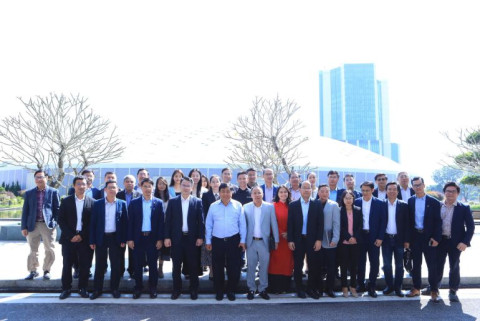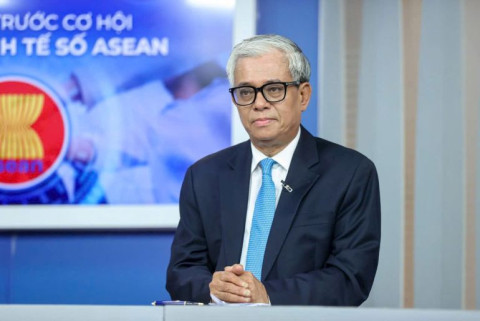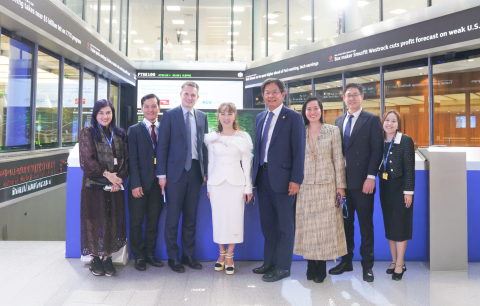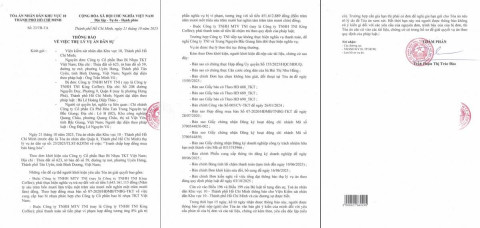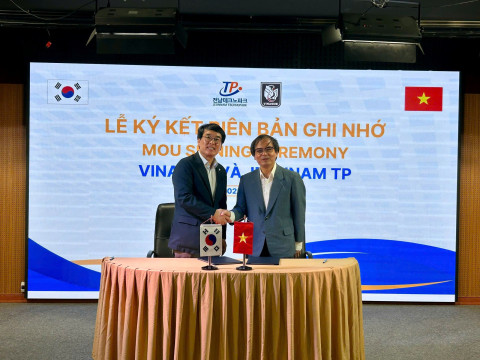Challenges and opportunities in the final sprint of public investment disbursement
- 20
- Business
- 11:39 14/10/2024
DNHN - With just over 3 months left until the end of the 2024 fiscal year, the public investment disbursement rate has only reached 47.29%. The pressure is increasing, requiring ministries and sectors to concentrate their efforts in the coming period.
Public investment disbursement has always been a challenging issue for the Government and relevant agencies. Minister of Planning and Investment Nguyễn Chí Dũng acknowledged that this disbursement rate “has not met expectations,” especially when compared to the same period last year. The delay in disbursement not only affects economic development plans but also impacts public and investor confidence in the Government's management capabilities.
Notably, among the 31 ministries and 23 localities with disbursement rates below the national average, major units like Ho Chi Minh City and Hanoi are also on this list. Ho Chi Minh City, with allocated capital of 79.263 trillion VND (accounting for 11.7% of the total national plan), has only disbursed 21.29%. Similarly, Hanoi, with more than 81.033 trillion VND (about 12% of the total plan), has only reached 38.88%. This not only reduces the overall disbursement rate but also negatively affects the country's economic development plan.
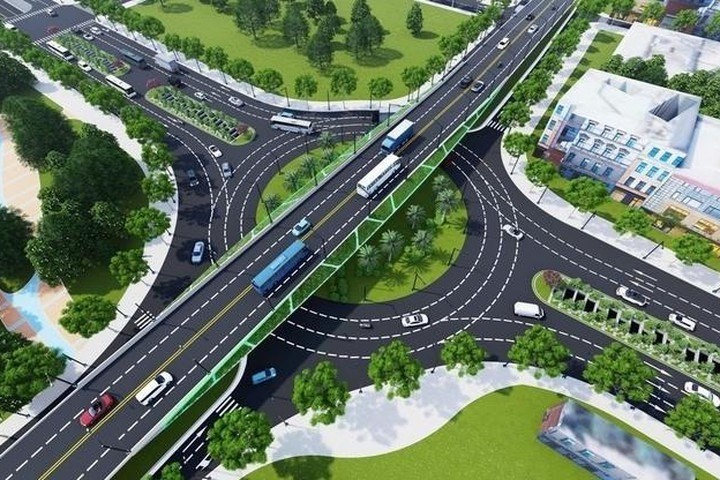
Several reasons have been identified for this situation. Issues related to land clearance, completion of investment procedures, and local budget revenues from land have not been ensured, all of which are obstacles. In addition, unfavorable weather has also contributed to slowing the progress of many projects.
Chairman of Tuyên Quang Province People's Committee, Mr. Nguyễn Văn Sơn, said that the province lost up to 4 months due to rain, which seriously affected the implementation of many projects. Nevertheless, the province is still making every effort to achieve its set goals.
At the same time, some units are still struggling with planning that does not match their execution capacity. Ho Chi Minh City, the Ministry of Finance, and the Vietnam National University Ho Chi Minh City are prime examples, having to propose "returning capital" because they could not disburse it all within the specified time. This is a weakness that needs to be addressed to avoid repetition in the future.
With approximately 350 trillion VND remaining to be disbursed in the final quarter of the year, the pressure is mounting. The Prime Minister has instructed ministries, sectors, and localities to accelerate disbursement progress, while also requesting measures such as reducing administrative procedure implementation time related to disbursement by 30%. This is a timely move to remove the difficulties faced by the units.
According to Deputy Chairman of the National Assembly Nguyễn Khắc Định, reallocating capital from slow-moving projects to more feasible ones is necessary. This is not only a way to improve the disbursement rate but also to motivate units that are making good progress. The Government is also promoting key projects to ensure economic growth in the current context.
Many localities have begun to make positive efforts in public investment disbursement. Tuyên Quang Province, despite difficulties due to weather, still committed to disbursing 95% of its allocated capital this year. The provincial chairman stated that they will implement 3 shifts, 4 accelerations to ensure work progress.
Similarly, Mr. Phan Văn Mãi, Chairman of Ho Chi Minh City People's Committee, affirmed that the city will speed up the implementation and disbursement of public investment, especially in key projects like the Ring Road 4. These are necessary efforts not only to meet the disbursement goals but also to contribute to the city's development.
Public investment disbursement is an important task, affecting not only economic development but also serving as an indicator of the government's management capacity. In the current context, with growing pressure, concentrating efforts for the final sprint is essential. Ministries, sectors, and localities need to coordinate closely, remove obstacles, and create innovative solutions to ensure achieving the 95% disbursement target in 2024. Along with the decisive directives from the Government, the spirit of effort from localities will be a driving force to overcome this challenge, contributing to building a stronger and more sustainable economy in the future.
Nhan Ha
Related news
# investment

Cam Pha compleletes investment attraction planning
With the potential and advantages of a modern city, Cam Pha is working to change the general construction planning to attract strategic investors who can help the local economy and society grow.

The National Assembly supports strong decentralization in public investment
The National Assembly has approved a policy of decentralization in public investment management, demonstrating a commitment to economic development and creating opportunities for local governments to mobilize resources.
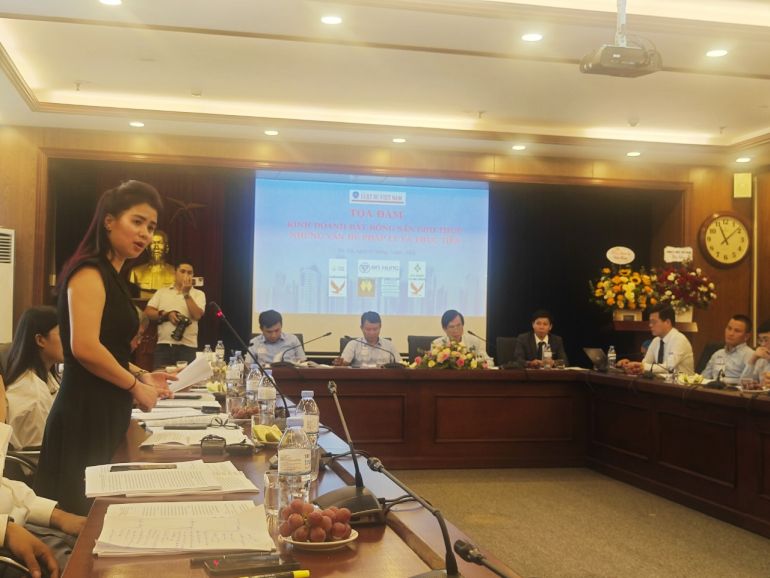
Rental real estate market: Investment potential and legal regulations
This information was presented at the seminar "Rental real estate business: Legal and practical issues" organized by the Vietnam Lawyers Journal on July 5 in Hanoi.

An Giang issues a license for solar energy tourism and encourages new investment
The tourist industry in An Giang province has set a target of 42 million visitors and income of VND 27,800 billion for the year 2021-2025.
Đọc thêm Business
From New Year messages of World Leaders to the “new rules” of the Global economy in 2026
At a pivotal moment of transition, New Year messages from capitals such as Hanoi, Beijing, Washington and Paris reflect distinct priorities and strategic visions.
Connecting Leaders, Shaping the Future: Strategic Leadership Planning Meeting – CorporateConnections Hanoi A
"Your network is your most powerful flowing asset. It generates value, multiplies opportunities, and accelerates your influence across borders."
Innovative ESG enterprise: Trạm Xe Việt startup proposes solutions to build a green mobility ecosystem
As Vietnam commits to achieving Net Zero by 2050 and tightens emissions standards, the transportation sector faces unprecedented pressure to transform.
Deputy Prime Minister Nguyễn Chí Dũng: “The country’s major challenges weigh heavily on my mind — and we must resolve them together.
On the morning of November 26, 2025, Deputy Prime Minister Nguyễn Chí Dũng chaired a high-level working session at the National Innovation Center (NIC) in Hòa Lạc.
Unitsky String Technologies signs cooperation agreements with three Vietnamese partners, opening a new direction for smart mobility and sustainable development
The signing ceremony took place in Minsk, Belarus, on November 28, 2025.
Before the D‑day to abolish flat‑rate tax: Fear of technology and costs leave small traders struggling to adapt
From 1 January 2026 the flat‑rate tax regime will be abolished. Small business households will be required to declare tax based on actual revenue. MISA supports the transition with technology to help micro‑merchants adapt smoothly and transparently.
Vietnamese enterprises at a crossroads: the impact of a potential US–China deal
As the world closely monitors every shift in US-China relations, emerging signals of a strategic agreement between the two global powers are raising hopes for global economic stability.
HDBank: Impressive profit growth, leading in profitability and advancing international integration
Ho Chi Minh City Development Joint Stock Commercial Bank (HDBank, stock code HDB) announced its consolidated profit before tax for the first 9 months of 2025 reached VND 14,803 billion, marking a 17% increase year-on-year (YoY).
TNI King Coffee sued for over VND 5 Billion in unpaid debts
On October 21, 2025, the People’s Court of District 10 in Ho Chi Minh City officially accepted a civil lawsuit concerning a commercial contract dispute between TKT Vietnam Plastic Packaging Joint Stock Company and TNI King Coffee Co., Ltd.
VINASME and Jeonnam Technopark Sign MOU on technology cooperation, human resource training, and trade promotion
On October 15, 2025, in Hanoi, VINASME and Jeonnam Technopark (Korea) signed an MOU to promote trade, advance technology transfer, and develop human resources between enterprises of both nations.





